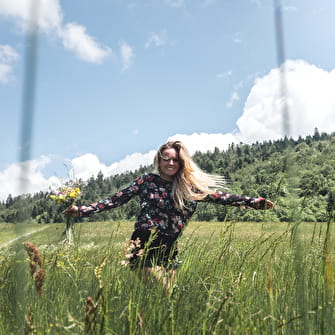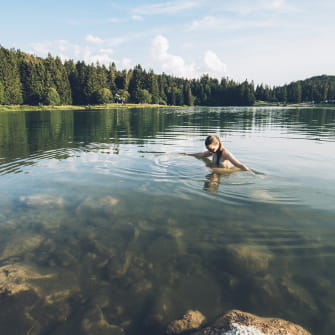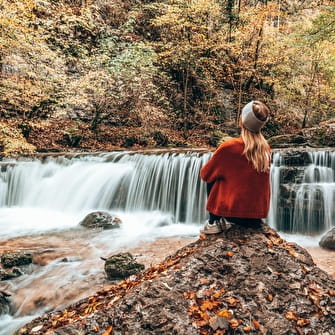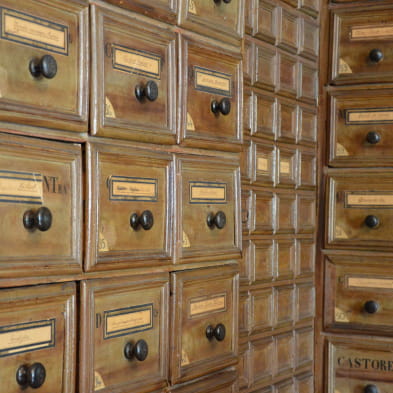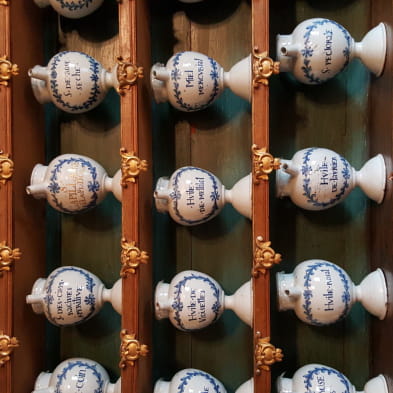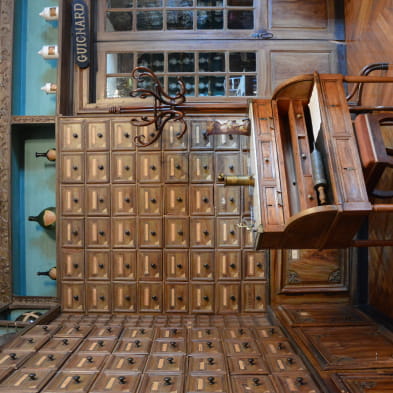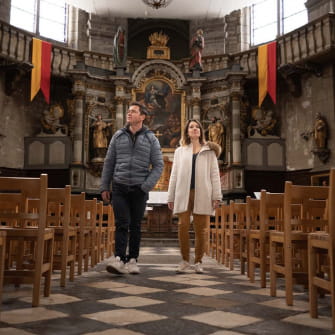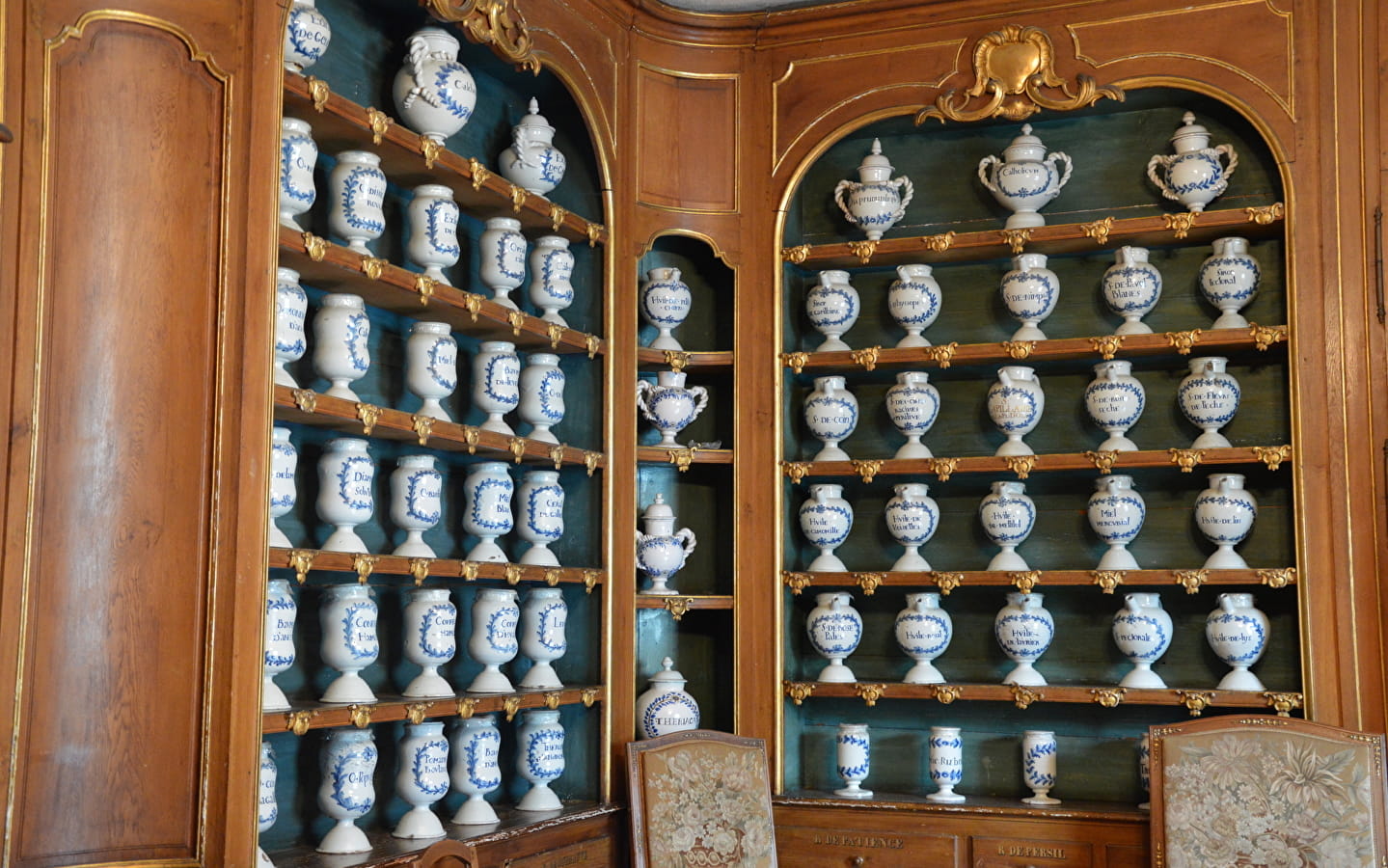
Apothicairerie de Salins-les-Bains
A first hospital was built inside the fortifications of the town of Salins-les-Bains, but when this Hôtel-Dieu was built at the end of the 17th century, the site was chosen to be outside, on the other side of the river La Furieuse.
To prevent the spread of disease, hospitals were built outside the city walls. The Hôtels Dieu lived off donations, and in Salins-les-Bains, Mr François, the hospital's former treasurer, made many donations to the apothecary.
The first floor used to be the dormitories, with large windows for good ventilation. The ground floor housed the apothecary, the chapel and the plague cemetery. In one of the rooms, earthenware pots are spread out on the shelves. The other room was the apothecary's laboratory, with a range of utensils. For example, a balance, a device for carbonating water, mortars and surgical instruments. Books on the preparation of remedies are also to be found on the room's shelves.
The apothecary's work is highlighted by a number of "show" jars, including the theriac jar, the best-known universal remedy at the time. The word refers to a remedy used to treat the bites of wild animals. It was made from dozens of ingredients, the three main ones being castoreum, viperine, honey and opium.
Initially, it was used to treat pain. Over the centuries, theriac retained its reputation as a panacea, a universal remedy. Small dog oil, brought back from Italy by Ambroise Paré, is another curiosity to be discovered in this apothecary.
The earthenware pots come from Dijon and are of Nivernais inspiration, recognisable by their blue and white floral decoration.
An ornamental mortar is also on display, as in the vast majority of apothecaries in Franche-Comté.
GUIDED TOURS
Offered by the Arbois Poligny Salins Coeur du Jura Tourist Office in July/August and during the European Heritage Days weekend.
For groups: all year round, by appointment.
- French, English, Spanish
- Credit card, Cheques and postal orders, Eurocard - Mastercard
- Pets not allowed
Guided tours in July and August and during the European Heritage Days.
Prices :


